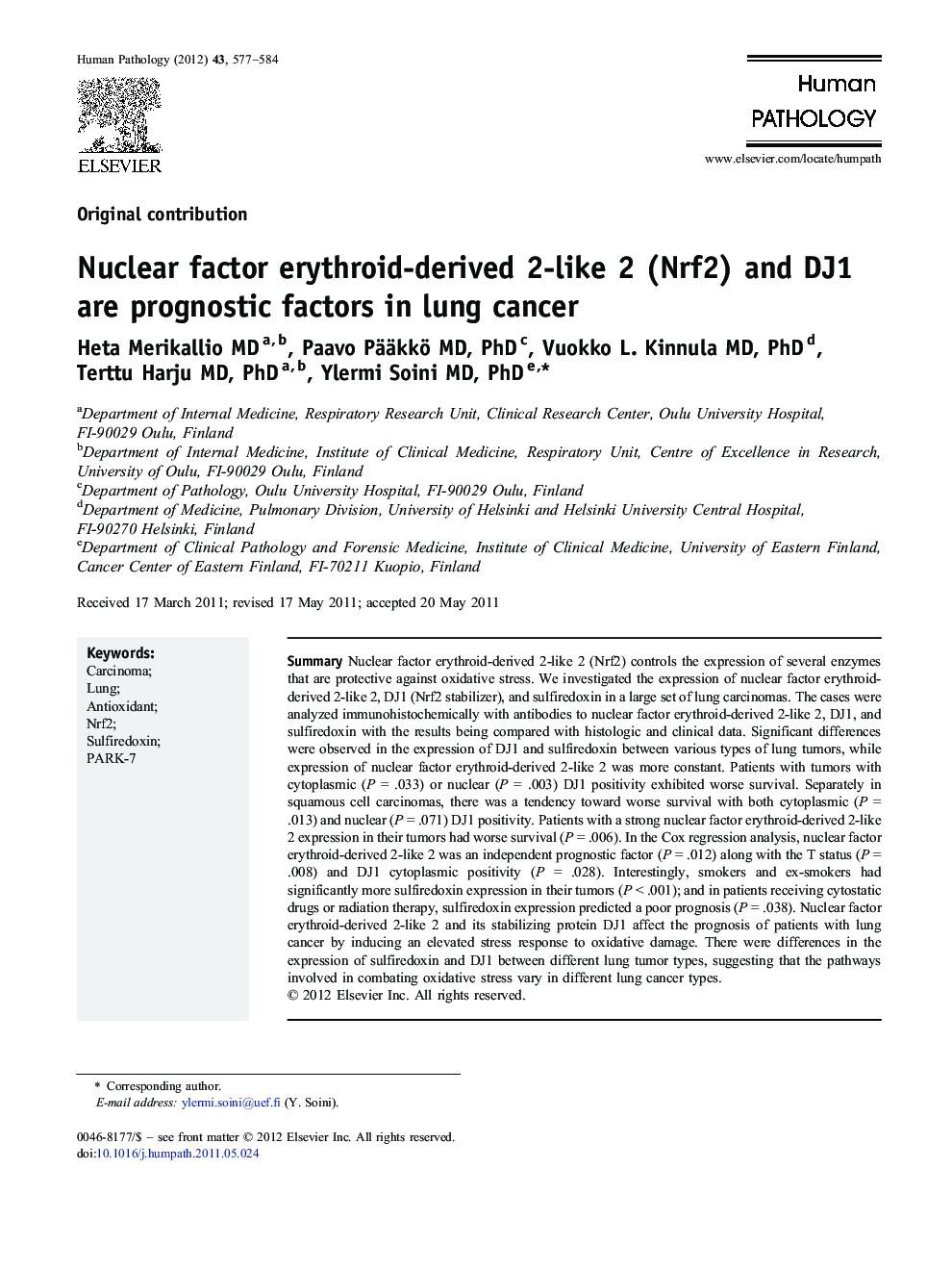| کد مقاله | کد نشریه | سال انتشار | مقاله انگلیسی | نسخه تمام متن |
|---|---|---|---|---|
| 4133558 | 1271424 | 2012 | 8 صفحه PDF | دانلود رایگان |

SummaryNuclear factor erythroid-derived 2-like 2 (Nrf2) controls the expression of several enzymes that are protective against oxidative stress. We investigated the expression of nuclear factor erythroid-derived 2-like 2, DJ1 (Nrf2 stabilizer), and sulfiredoxin in a large set of lung carcinomas. The cases were analyzed immunohistochemically with antibodies to nuclear factor erythroid-derived 2-like 2, DJ1, and sulfiredoxin with the results being compared with histologic and clinical data. Significant differences were observed in the expression of DJ1 and sulfiredoxin between various types of lung tumors, while expression of nuclear factor erythroid-derived 2-like 2 was more constant. Patients with tumors with cytoplasmic (P = .033) or nuclear (P = .003) DJ1 positivity exhibited worse survival. Separately in squamous cell carcinomas, there was a tendency toward worse survival with both cytoplasmic (P = .013) and nuclear (P = .071) DJ1 positivity. Patients with a strong nuclear factor erythroid-derived 2-like 2 expression in their tumors had worse survival (P = .006). In the Cox regression analysis, nuclear factor erythroid-derived 2-like 2 was an independent prognostic factor (P = .012) along with the T status (P = .008) and DJ1 cytoplasmic positivity (P = .028). Interestingly, smokers and ex-smokers had significantly more sulfiredoxin expression in their tumors (P < .001); and in patients receiving cytostatic drugs or radiation therapy, sulfiredoxin expression predicted a poor prognosis (P = .038). Nuclear factor erythroid-derived 2-like 2 and its stabilizing protein DJ1 affect the prognosis of patients with lung cancer by inducing an elevated stress response to oxidative damage. There were differences in the expression of sulfiredoxin and DJ1 between different lung tumor types, suggesting that the pathways involved in combating oxidative stress vary in different lung cancer types.
Journal: Human Pathology - Volume 43, Issue 4, April 2012, Pages 577–584